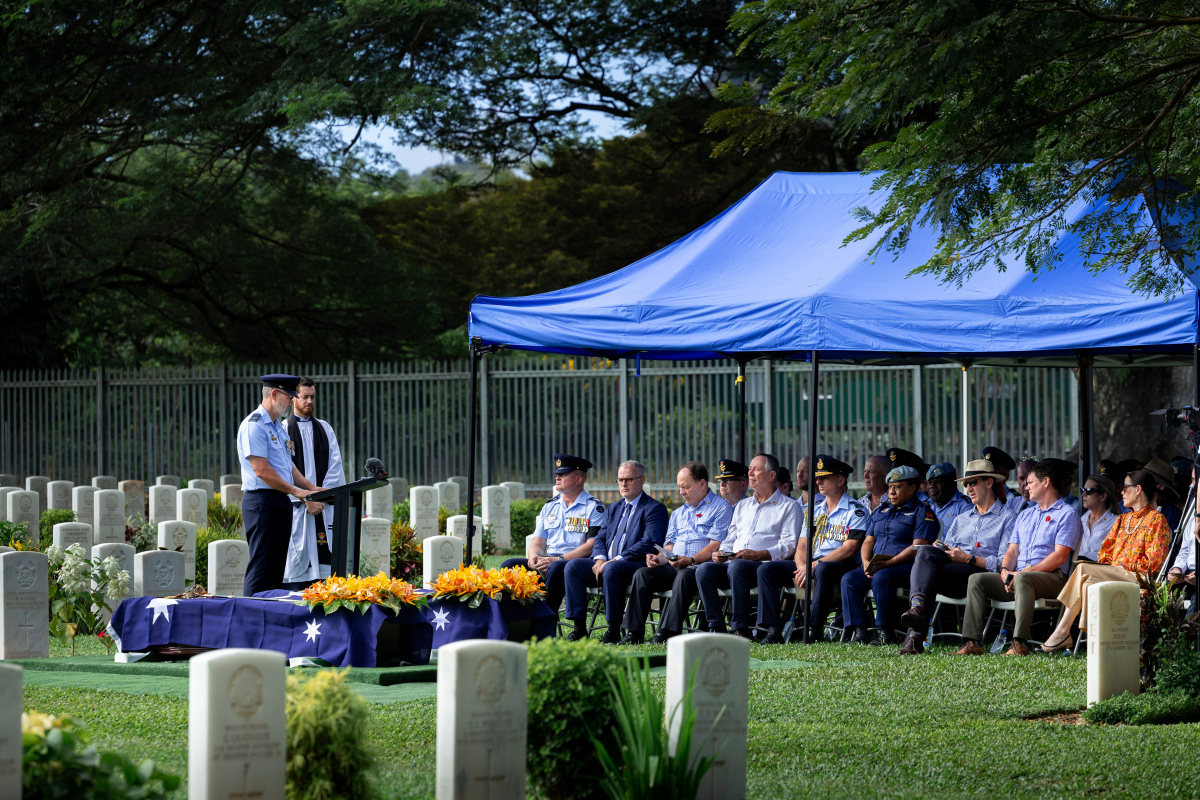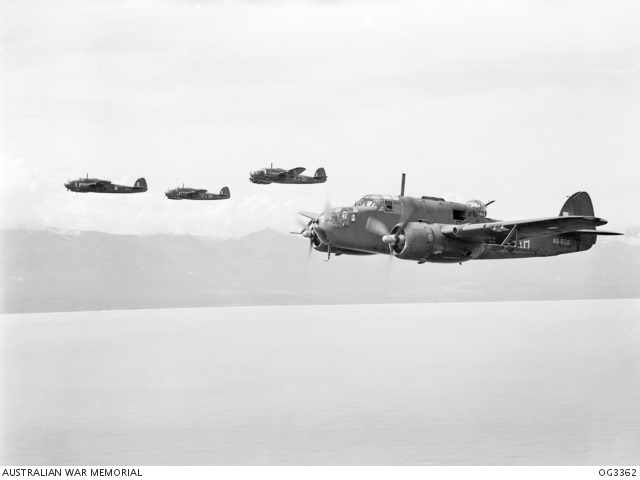Yesterday, the RAAF conducted a committal service at Bomana War Cemetery in Port Moresby for the remains of two aviators killed on 5 September 1943, during a mission off what is now Papua New Guinea.
The aviators were Warrant Officers Russell Henry Grigg (pilot) and Clement Batstone Wiggins (navigator). They were among a crew of 4 aboard a Beaufort light bomber (A9-186) that was shot down during an attack on Japanese forces at Gasmata on the island of New Britain.
A9-186 was among 10 Beauforts from No 100 Squadron that were on a mission to bomb the airfield at Gasmata. Japanese ground fire was heavy and accurate that day, and 3 of the Beauforts were shot down over the target while another was lost on its return to base. Beaufort A9-186 was last seen on fire during an attack run.
The wreckage was found in 43 metres of water, 1.4 kilometres southwest of Gasmata in late 2020. The aircraft and remains of Warrant Officers Grigg and Wiggins were positively identified following investigations undertaken in February 2022. Searching for and retrieving their remains – a small amount of bone – involved the use of specialist divers. The work was challenging because the Beaufort was extensively damaged by fire and covered in layers of sediment and marine growth. Sadly, they were unable to find the remains of the two other crew members who were also on board – Flight Sergeants Albert Beckett and Gordon Lewis Hamilton.
The service yesterday was attended by Australian and Papua New Guinean dignitaries, including DVA Secretary Alison Frame, as well as relatives of the aviators. The 2 men were committed to the ground as part of a formal military send-off involving rifle volleys.
‘We honour the service and ultimate sacrifice of the crew of Beaufort A9-186, and specifically Warrant Officers Grigg and Wiggins,’ said Deputy Chief of Air Force, Air Vice Marshal Harvey Reynolds.
‘We also pay our respects to their families and hope that today will bring them closure after eight decades.
‘We thank the Papua New Guinea Government for their support for the recovery of our aviators and to those who carefully tend the last resting places of our fallen.’
The identification and recovery missions of A9-186 were sponsored by businessperson and philanthropist Andrew Forrest AO. The initial discovery of the aircraft was made by an Ocean Ecology Pty Ltd dive team working for Dr Forrest as part of a search for his uncle, who was lost during a mission to Gasmata while piloting another Beaufort. RAAF anthropologists and biologists along with staff at the NSW Forensic and Analytical Science Service identified the remains as belonging to Warrant Officers Grigg and Wiggins.
Warrant Officers Grigg and Wiggins join more than 3,300 Australian and 40 New Guinean defence personnel who have been laid to rest in the Bomana War Cemetery.
Currently, 3,125 RAAF personnel from the Second World War are missing with no known grave.
The wreckage of A9-186 will remain on the seafloor as a war grave.
Lest we forget.

Squadron Leader Christopher Sell, Temporary Commanding Officer of No. 100 Squadron, addresses invited guests during the committal service.

Four Beauforts of No 100 Squadron off the northern coast of New Guinea en route to attack the Japanese at Wewak, 20 January 1945. Courtesy Australian War Memorial, OG3362